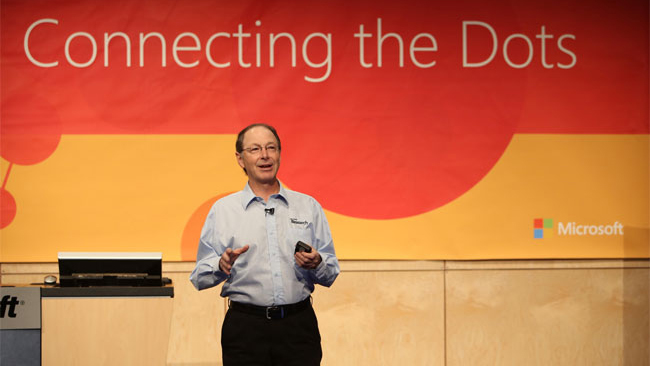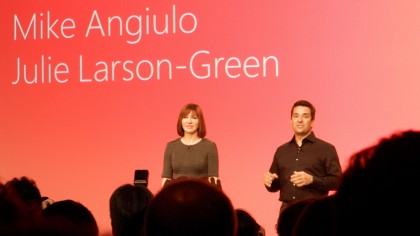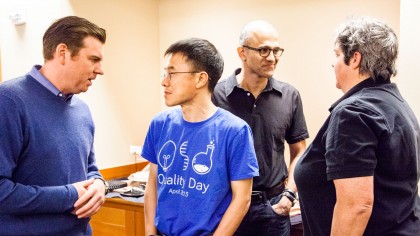Who's who at Microsoft (and what they're doing next)
Who has a new job at Microsoft and what does it mean for next year's products?

Ever since former Windows chief Steven Sinofsky left the company last year, it's been all change in the executive ranks at Microsoft – culminating in a "far-reaching realignment" of its structure and Steve Ballmer's surprise resignation.
Some of the job changes have been obvious promotions and logical repositionings, but there are also some veteran Microsoft leaders moving back into product teams. And some of those are top secret developments that might represent the future of Microsoft and its products.
One strategy, one Microsoft
It sounded pretty simple when Ballmer first announced it; common teams for marketing, legal, HR, finance and the other things that keep the company running, plus four areas of engineering - OS, apps, cloud and devices, with the Dynamics business tools staying separate because it needs special attention.
Terry Myerson's success with Windows Phone - a new OS that's proving popular enough to give Apple's iOS some strong competition in most countries that aren't the US - made him a good choice to look after the core OS group.

Julie Larson-Green moved from running Windows to running the devices team, Qi Lu shifted from running Bing to controlling apps (everything from Office to Skype) and Satya Nadella added cloud services like Xbox Live and Outlook.com to enterprise responsibilities that already included Office 365, Azure and SQL Server.
But then there's the Business Development and Evangelism team, run by Tony Bates who used to be in charge of Skype, and the Advanced Strategy team under Eric Rudder.
The next Microsoft CEO?
Bates has made the list of rumoured candidates in Microsoft's CEO search, possibly because he's been a CEO already at Skype. Before that he was the senior vice president of Cisco's enterprise, commercial and small business group, and before that he was building the Internet (at least the part of it that US telecoms giant MCI - now part of Verizon - was responsible for).
Are you a pro? Subscribe to our newsletter
Sign up to the TechRadar Pro newsletter to get all the top news, opinion, features and guidance your business needs to succeed!
His current job is trying to make all Microsoft's various partners happy, from the OEMs who make PCs and smartphones to the developers that Microsoft wants to get building apps for Windows 8 and Windows Phone. He's also responsible for Microsoft's relationship with chip makers like ARM and Intel, where Microsoft wants to keep them coming up with chips that run Windows well rather than pushing Chromebooks.

Microsoft's 10 year search partnership with Yahoo is also under his remit. It's supposed to last until 2020, although Yahoo CEO Marissa Mayer has been trying to put the brakes on the agreement and could potentially opt out by 2015.
It might not matter. The partnership is less important than it once was, as Bing is slowly taking market share away from Yahoo. But in the US, Yahoo's 11% share is a welcome addition to Bing's 18% share - both of which are still dwarfed by Google's 67% US share of search traffic.
That makes Bates' new job less something to keep him busy and more a key part of connecting Microsoft to the rest of the industry. It's the kind of thing that Andy Lees was supposed to do with partners like Barnes & Noble, but Microsoft will demand better results than a Windows 8 Nook app.
What Microsoft does next
So far, we've talked about what Microsoft does today. Eric Rudder's job is about what Microsoft does next.
We haven't heard much from Rudder in the last few years. Back when Steven Sinofsky was running the Office team, Rudder was in charge of developer tools like Visual Studio as well as the .NET platform. He's worked on Microsoft enterprise products during his career, stretching all the way back to the FoxPro database. In 2005 he became vice president of Technical Strategy; an internal think tank that worked for Bill Gates planning, well, Microsoft's technical strategy.
Mary (Twitter, Google+, website) started her career at Future Publishing, saw the AOL meltdown first hand the first time around when she ran the AOL UK computing channel, and she's been a freelance tech writer for over a decade. She's used every version of Windows and Office released, and every smartphone too, but she's still looking for the perfect tablet. Yes, she really does have USB earrings.